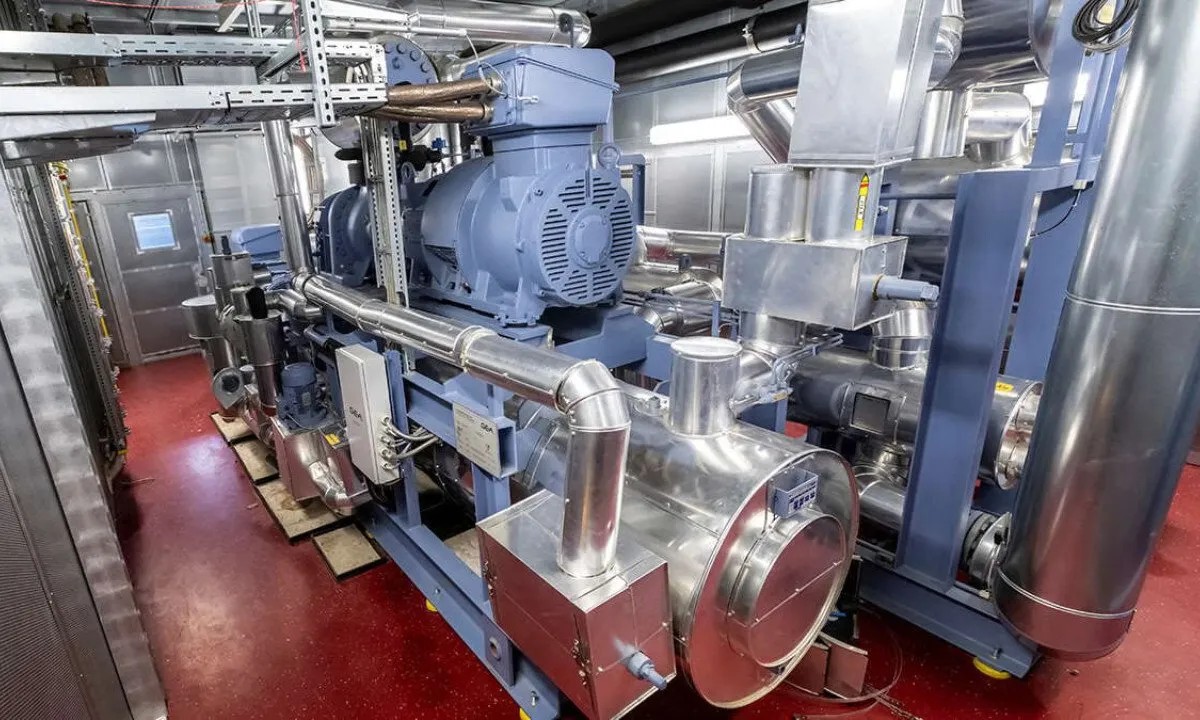District heating plant in historic German city uses ammonia heat pumps to generate heat from wastewater
March 26, 2024

Stadtwerke Lemgo, the utility provider in the German town of Lemgo, has installed two ammonia (R717)-based heat pumps from German OEM GEA to cover the district heating needs for the city’s historic old town, which dates back to 1190.
GEA said in a press release that the heat pumps supply roughly 18GWh of heat per year to Lemgo’s old town, reducing emissions by 3,200 metric tons of CO2e per year. The heat is sourced from the city’s wastewater treatment plant, waste heat from a combined heat and power plant (CHP) and the Bega River, which runs through the town.
“The heat from the wastewater treatment plant’s effluent [treated wastewater] alone can cover two-thirds of the old town’s heating requirements, or 12% of the district heating network’s total demand,” GEA said, noting that the effluent’s average annual temperature is around 13°C (55.4°F).
Two GEA heat pumps were installed: the MX SP2VE6B(RP) pure water heat pump and REDASTRUM HE.
The pure water heat pump has a COPline (including the complete compressor driveline) of 2.7 and a heating capacity of 2.37MW (673.9TR), with the treated wastewater providing 1.6MW (454.9TR) of thermal input at a temperature of 15°C (59°F). The REDASTRUM heat pump has a COPline of 3.2 and a heating capacity of 785kW (223.2TR), with the waste heat from the CHP providing 560kW (159TR) of thermal input at a temperature of 63°C (145.4°F). Both provide flow temperatures of 82°C (179.6°F).
Compared to synthetic refrigerants, GEA said the COP for ammonia heat pumps is 40% higher in district heating networks “operating under typical conditions.”
“[That] means 40% fewer emissions, 40% less energy and 40% lower costs,” GEA noted.
Unique decarbonization challenges
Lemgo, located in the Lippe district of the state of North Rhine-Westphalia, is home to more than 40,000 people. The city’s old-town district is dotted with historical homes dating back hundreds of years, many of which, GEA said in a press release, must be preserved in their original state. The old town district is connected to Lemgo’s district heating network, which dates back to the 1960s.
The city’s ambition is to be climate neutral by 2035, but the city’s old town presents a challenge to achieving that goal as many of its historical buildings cannot be extensively refurbished. Given those limitations and the existing infrastructure, Lemgo decided to focus its efforts on decarbonizing the district heating network that serves the city’s old town.
Now that the project is complete, the city is setting its sights even higher.
“Stadtwerke Lemgo is not yet satisfied with what it has achieved,” GEA said. “They are already planning the next steps towards a CO2-neutral electricity and heat supply for the town: By 2028, more than 55% of the district heating required is to be generated from renewable sources.”


